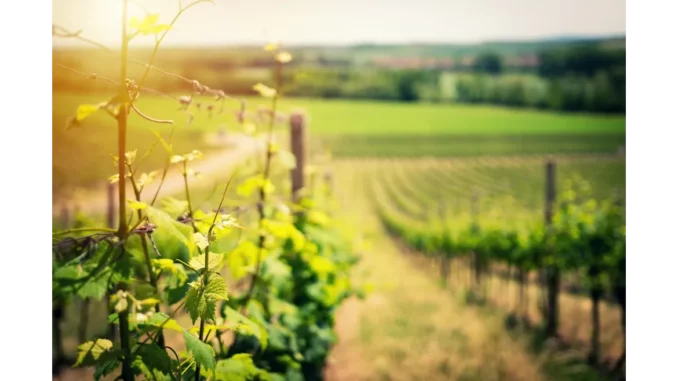
Elevating Your Wine Tasting Experience: A Sophisticated Guide to Food and Wine Pairing
Wine tasting transcends the simple act of sipping; it is an art form that orchestrates a harmonious symphony of flavours, elevating both the wine and the accompanying food to unparalleled heights. For novices, the world of food and wine pairing may seem a labyrinthine pursuit, yet with a few foundational principles, you can enrich your dining experience and uncover exquisite combinations. This guide delves into the essentials of wine pairing, offering expert insights and practical tips to navigate this delectable journey.
Understanding the Fundamentals of Wine
Before embarking on the intricate dance of pairing, it is essential to acquaint oneself with the basic categories of wine. Broadly, wine is classified into four primary types: red, white, rosé, and sparkling, each possessing its distinct characteristics.
- Red Wine: Renowned for its robust flavours and tannins, red wine is crafted from grape skins, which also bestow its rich colour. Popular varieties include Cabernet Sauvignon, Merlot, and Pinot Noir.
- White Wine: Produced exclusively from grape juice, white wine typically exhibits lighter flavours and a clear hue. Chardonnay, Sauvignon Blanc, and Riesling are prominent examples.
- Rosé Wine: Bridging the gap between red and white, rosé wine features a pink tint and a flavour profile that balances elements of both.
- Sparkling Wine: Distinguished by its effervescence, sparkling wine encompasses Champagne, Prosecco, and Cava, infusing a celebratory note into any occasion.
Grasping these basics paves the way for a deeper appreciation of wine pairing, enhancing not merely the taste of your meal, but the entire dining experience.
The Art of Pairing Food with Wine
Pairing food and wine is akin to composing a masterpiece, where harmony and balance are paramount. Consider wine as a seasoning that can either elevate or detract from the dish’s flavours. Here are some guiding principles:
-
Match the Weight: The weight or body of the wine should mirror that of the food. Light dishes such as salads or seafood pair beautifully with light wines like Sauvignon Blanc or Pinot Grigio. Conversely, hearty dishes like steak or lamb call for a full-bodied wine such as Cabernet Sauvignon or Syrah.
-
Consider the Flavours: Complementary flavours can enhance one another. For instance, a rich, buttery Chardonnay pairs exquisitely with creamy dishes, whereas a zesty Sauvignon Blanc harmonises with tangy goat cheese and fresh herbs.
-
Balance Acidity: Dishes with high acidity, like tomato-based sauces, necessitate a wine with comparable acidity to maintain balance. Sangiovese or Chianti are excellent choices for such fare.
-
Play with Contrasts: At times, contrasting flavours yield a delightful synergy. A sweet wine like Riesling can temper the heat of spicy dishes, while a salty blue cheese pairs magnificently with a sweet dessert wine.
Classic Pairings to Inspire Your Palate
To guide you on your journey, here are some time-honoured pairings that showcase the harmonious relationship between food and wine:
- Sauvignon Blanc and Goat Cheese: The crisp acidity of Sauvignon Blanc cuts through the tanginess of goat cheese, creating a refreshing and balanced combination.
- Chardonnay and Lobster: A rich, buttery Chardonnay complements the luxurious texture and flavour of lobster, enhancing the overall dining experience.
- Pinot Noir and Duck: The earthy, fruity notes of Pinot Noir pair beautifully with the gamey flavours of duck, resulting in a harmonious balance.
- Cabernet Sauvignon and Steak: The robust tannins in Cabernet Sauvignon soften the fat in a juicy steak, bringing out the best in both the wine and the meat.
- Riesling and Spicy Asian Cuisine: The sweetness of Riesling balances the heat and complexity of spicy Asian dishes, making for a delightful pairing.
Experimenting with Pairings
While these classic pairings serve as an excellent starting point, do not hesitate to experiment. Wine pairing is an art as well as a science, and personal preference plays a significant role. Venture into different combinations and trust your palate; you may uncover an unexpected pairing that delights your senses.
Common Pitfalls to Avoid
As you delve into the world of food and wine pairing, be mindful of some common pitfalls:
- Overpowering Flavours: Avoid matching a delicate dish with a bold wine, as the wine may overshadow the food’s subtle flavours.
- Ignoring Sweetness Levels: Ensure the wine is as sweet or sweeter than the dish to avoid a jarring taste clash.
- Serving Temperature: Serve wine at the appropriate temperature to fully appreciate its flavour profile. Red wines are best served slightly below room temperature, while white wines should be chilled.
Hosting Your Own Wine Tasting Evening
Hosting a wine tasting evening is a splendid way to explore different pairings with friends and family. Here are some tips to ensure a successful event:
- Choose a Theme: Focus on a specific region, grape variety, or type of wine to give your gathering direction.
- Keep the Guest List Intimate: A smaller group facilitates more meaningful interaction and discussion.
- Offer a Variety of Foods: Provide a range of textures and flavours to complement the wines.
- Provide Palate Cleansers: Offer water and neutral snacks like crackers between tastings to cleanse the palate.
Embrace the journey of food and wine pairing, allowing it to deepen your appreciation for both. By mastering the basics and daring to experiment, you can discover pairings that elevate your meals to extraordinary heights. So, pour yourself a glass, gather some delectable food, and embark on this flavourful adventure. Cheers!


Be the first to comment